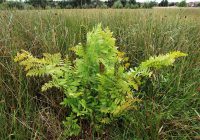Dr Phil Smith’s Wildlife Notes
June 2012
Only three months ago, I was describing drought conditions. What a contrast, with June this year apparently being the wettest on record. Unfortunately, the rain seems to have come too late to help our beleaguered Natterjack Toads, though a few emerging toadlets were found around scrapes deepened last winter. The cold, windy and damp conditions were also unhelpful to warmth-loving butterflies and dragonflies, while local moth enthusiasts reported low numbers in their light-traps. However, some plants seem to have prospered and it has certainly been one of the best summers on record for Bee Orchids. I found several new colonies on Crosby Marine Park, two with more than 100 flower-spikes. A visit to Haskayne Cutting Nature Reserve on 6th was rewarded with over 200 marsh-orchids, the majority being Northern. There were also plenty of Southern Marsh-orchids, together with single spikes of Bee and Early Marsh-orchids.
Even more impressive were the orchids at Old Hollow Meadow, Banks, where a field meeting of West Lancashire Wildlife took place on 13th. Guided by Natural England site manager, Dave Mercer, the group was blown away by the spectacle of this large, traditionally managed hay-meadow so full of orchids it was almost impossible to avoid treading on them. Last June we thought there were perhaps 250,000; this time our estimate was double that figure! As before, most were Southern Marsh-orchids but there were plenty of Northerns, a scattering of Common Spotted-orchids and the big hybrid between Southern Marsh and Common Spotted, appropriately named Dactylorhiza × grandis. Not seen on our previous visit were about 50 spikes of Early Marsh-orchid, most being the lovely pale pink sub-species incarnata. This is uncommon along the coast, where it is usually replaced by the brick-red coccinea.
Patricia Lockwood joined me on 10th to show members of the Wirral Alpine Garden Society around the Ainsdale dunes. On a pleasantly sunny day, several kinds of orchids and other interesting plants were seen but the highlight was a tiny white clover which I didn’t recognise just north of the Discovery Centre. Pat’s flower book revealed this was Rough Clover (Trifolium scabrum), a rather uncommon native species mostly found near the coast in the south and east and new to the South Lancashire vice-county. Later visits revealed lots of it on an area previously occupied by caravans. Annual mowing in late summer by Sefton Leisure Services, together with Rabbit-grazing and a certain amount of recreational trampling, keeps the vegetation open enough to support the clover and many other colourful wildflowers.
Last August, I reported the rescue of over 800 Isle of Man Cabbage plants from dunes at Crosby Marine Park that were about to be dug up to use for coastal defence at Hightown. We needed to monitor the results so Pat and I visited Crosby and Birkdale to look for the translocated plants. As expected, few of the transplants had survived, mortality being well over 90%. However, good numbers of tiny seedlings were found, especially at Birkdale, these having arisen from seed that was scattered at the same time as the translocation. A happy surprise was our discovery of nearly 500Isle of Man Cabbage plants at the site of the original Crosby colony where most of the dune habitat had been removed. Many of these must have germinated from long-buried seed.
We also surveyed an acid meadow inland of the dunes at Hightown. Back in 1980, I found four specimens of the magnificent Royal Fern here. Remarkably, it has now increased to about 20 individuals. This fern is now extremely scarce in the region, having been collected to near extinction by the Victorians. Among other attractions were the regionally rare Slender Trefoil and Knotted Clover on an adjacent playing field. A female Broad-bodied Chaser, our fattest dragonfly, hunted in the shelter of a row of pines, while lots of Common Green Grasshoppers included a colour-form with black fore-wings that I hadn’t seen before.




